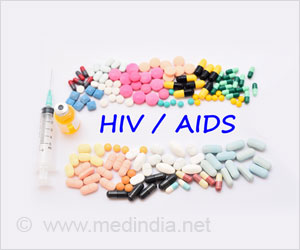The idea that war, forced migrations, refugee crisis, large-scale rape of women in sub-Saharan African nations has increased the prevalence of HIV in that area is a myth.
The idea that war, forced migrations, refugee crisis, large-scale rape of women in sub-Saharan African nations has increased the prevalence of HIV in that area is a myth. This is according to a new study by UNHCR of seven African nations that was published this week in the British medical journal The Lancet.
There are no data to show that refugees fleeing conflict spread HIV infection in host communities; the reverse may be the case.The UNHCR study team , led by Dr. Paul Spiegel of our Public Health and HIV Section, tracked HIV infection rates in seven sub-Saharan nations beset by conflict -- Burundi, Democratic Republic of Congo, Rwanda, Sierra Leone, Somalia, Sudan and Uganda.
Of the 40 million people worldwide infected with the human immunodeficiency virus that causes AIDS, about 25 million are in the poor African countries south of the Sahara.
The data on HIV prevalence in 12 refugee camps showed that nine actually had a lower prevalence of infection than surrounding host communities, while two had similar rates and only one a higher prevalence.
Dr. Paul Spiegel, stressed that the findings of the survey could not be universally applied to all conflicts in the world. 'Every case must be examined individually and context is very important,' said Dr. Spiegel, who heads UNHCR's HIV and AIDS unit. He added that the findings should not be interpreted to mean people should not worry about HIV in conflicts.
It is a common belief that violence and rape fuel the HIV epidemic in countries affected by conflict, and consequently refugees fleeing humanitarian emergencies have a high prevalence of HIV infection. But the study team could find no clear evidence to support the view.
Advertisement
The authors suggest that previous poor survey methods and biased interpretation of data might have led to the high rates of HIV infection previously reported during conflict. They point out that because data collection during conflict is fraught with difficulties and interpretation should be cautious, such estimates need to be supplemented with reliable data from after conflict. They conclude: “This study shows the need for mechanisms to provide time sensitive information on the effect of conflict on disease incidence.”
Advertisement
Furthermore, he emphasized that the survey also showed that more attention needed to be paid to the post-conflict period where accessibility and mobility of populations recovering from war may create an environment conducive to the spread of HIV.
Source-Medindia
BIN/M











